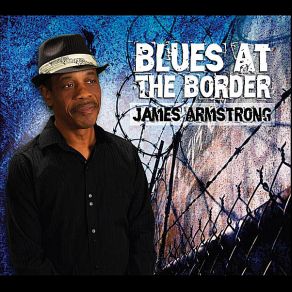Blues At The Border
Download links and information about Blues At The Border by James Armstrong. This album was released in 2011 and it belongs to Blues, Pop genres. It contains 11 tracks with total duration of 45:10 minutes.

|
|
|---|---|
| Artist: | James Armstrong |
| Release date: | 2011 |
| Genre: | Blues, Pop |
| Tracks: | 11 |
| Duration: | 45:10 |
| Buy it NOW at: | |
| Buy on iTunes $9.99 | |
| Buy on Amazon $8.99 | |
Tracks
[Edit]| No. | Title | Length |
|---|---|---|
| 1. | Every Thing Good To Ya (Ain't Always Good For Ya) | 4:06 |
| 2. | Somebody Got To Pay | 3:21 |
| 3. | Baby Can You Hear Me | 3:26 |
| 4. | Blues At The Border | 5:12 |
| 5. | Devil's Candy | 4:29 |
| 6. | Nothing Left To Say | 3:32 |
| 7. | High Maintenance Woman | 3:57 |
| 8. | Good Man, Bad Thing | 3:34 |
| 9. | Young Man With The Blues | 5:52 |
| 10. | Brand New Man | 4:32 |
| 11. | Long Black Car | 3:09 |
Details
[Edit]An 11-year break separates blues singer/guitarist James Armstrong's third album, Got It Goin' On (2000) from his fourth, 2011's Blues at the Border, and in the latter album, he acknowledges that "the world has changed" in the interim. Specifically, the title song, in which that statement is made, explores a major change for a working musician, especially one who must maintain a following overseas. The 9/11 terrorist attacks of 2001 have made travel much more difficult, and that's the subject of "Blues at the Border," the song, in which Armstrong, co-writing with his girlfriend Madonna Hamel (who lives outside the U.S.), details the impediments to getting around by air and from country to country, eventually expanding into comic hyperbole. This, of course, is not the usual topic for a blues song, but Armstrong also manages to address more conventional matters in songs like "Nothing Left to Say" and "Devil's Candy," in which romantic travails predominate over intercontinental travel. Yet Armstrong continues to be attracted to more individual concerns, such as in "High Maintenance Woman," which extols the virtues of such a person (and in which Hamel makes a guest appearance as the title character), and the autobiographical "Young Man with the Blues," in which he reflects on his father and his sons. Such material gives the singer, whose voice resembles the relaxed, soft-spoken tenor of Buddy Guy, a distinct persona, even as the songs' arrangements generally stick to familiar blues structures. Those structures leave Armstrong plenty of room for some stinging solos, and he also makes space for organist George Papageorge, who turns in some strong playing. It all adds up to a good blues workout from an artist who has been away from recording for too long.